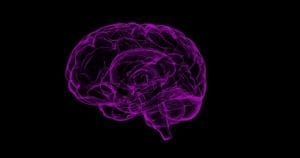Brain/Spinal Cord Cancers in Children
What are brain/spinal cord cancers in children?
Brain and spinal cord cancers are masses of accumulated abnormal cells (tumors) found inside the skull or the spinal column that have grown out of control. Tumors occur when genes that regulate normal cell growth are mutated or damaged, which leads to cells growing and dividing out of control. The medical name for the brain and spinal cord is the central nervous system; while the brain controls our thoughts, memories, speech, feelings, vision, hearing, movement and more, the spinal cord helps to carry messages between the brain and the rest of the body. Since brain and spinal cord tumors tend to be different in adults and children—forming in different areas, developing from different cell types, and requiring different treatments—this page only discusses brain and spinal cord cancers in children. To learn more about them in adults, click here. Brain and spinal cord tumors are the second most common cancers in children (leukemia is the first). Approximately 4,000 central nervous system tumors are diagnosed in children each year. They occur slightly more often in boys than girls, and they tend to affect more children under the age of 9.What are the types and classifications of brain/spinal cord tumors?
There are many types of brain and spinal cord tumors. Most are named by either the type of normal cell they start in or their location. Primary tumors can start in almost any type of tissue or cell within the brain and spinal cord, but brain tumors in children are more likely to start in lower parts of the brain. Tumors in different places of the central nervous system may be treated differently. Primary tumors versus metastatic/secondary tumors:- Tumors that actually start in the brain are called primary brain tumors. Most brain tumors in children are primary tumors.
- Tumors that start in other organs and then spread to the brain are called secondary or metastatic brain tumors. They are much less common in children. They are treated differently than primary tumors.
- Malignant tumors are cancerous masses of cells that can quickly invade surrounding tissue. Since they spread rapidly, they are often difficult to remove surgically.
- Benign tumors are non-cancerous, slowly growing masses of cells that do not spread to completely different body parts. However, benign tumors can still cause damage by growing and spreading to other parts of the brain, which can destroy normal brain tissue. They can usually be removed surgically and do not come back.
What are the symptoms of brain/spinal cord cancers in children?
Symptoms can vary widely, and they depend on the type of tumor, location, size and rate of growth of the tumor. So, it is important to note that each child may not experience all the symptoms listed below. They typically develop slowly and get worse as the tumor grows.- In infants, rapidly widening head and/or bulging crown
- Headaches that tend to get worse over time
- Nausea and vomiting
- Blurred vision and/or crossed eyes
- Balance problems
- Seizures
- Changes in behavior
- Changes in personality
- Drowsiness or even coma
- Irritability
- Loss of appetite
- Developmental delay
- Drop in intellectual and physical ability
- Speech, thinking, and comprehension problems
- Difficulty controlling motor function
- Hearing problems
- Difficulty swallowing
- Numbness
- Lack of coordination
- Bladder/bowel problems
What causes brain/spinal cord cancers in children?
Normal, healthy cells grow at a steady rate, and die at a set time. However, sometimes healthy cells develop abnormalities; they grow and multiply at an out of control rate, and take much longer to die. When this happens to cells in the brain or spinal cord, they accumulate into a tumor there. Still, researchers are not completely sure as to why primary brain and spinal cord tumors develop. Unlike many other cancers, tumors that start in the brain and spinal cord don’t often spread to other organs. Unlike cancer in adults, childhood cancer isn’t usually linked to lifestyle and environmental risk factors. Still, radiation exposure to the head is a possible risk factor for children. For example, if a child has been previously exposed to radiation as treatment for another disease, like leukemia, the child may be at a greater risk of developing brain or spinal cord cancer in the next 10 to 15 years. In rare cases, children may have inherited mutated genes from their parents that put them at increased risk for certain types of tumors. The genes may also not be inherited but still mutate before birth.How are brain/spinal cord cancers diagnosed in children?
Brain/spinal cord cancers are diagnosed using the following procedures:- Neurological exam
- Physical exam
- Complete recording of medical history
- X-ray
- CT scan
- Various MRI scans
- PET scan
- Angiography/arteriogram
- Biopsy
- Stereotactic needle biopsy
- Lumbar puncture (spinal tap)
- Blood test
- Urine test
What are brain/spinal cord tumor grades?
The tumor’s grade explains how likely it is to grow into nearby tissue and how fast it is growing.- Grade I: Tumor grows slowly and does not invade nearby tissue. Can usually be removed by surgery.
- Grade II: Tumor grows slowly but can grow into nearby brain tissue. It is more likely to come back after surgery than a Grade I tumor and more likely to become a faster-growing tumor over time.
- Grade III: Tumor can grow into nearby brain tissue. Tumor looks abnormal under the microscope and likely will need other treatments besides surgery.
- Grade IV: The fastest growing tumor. This needs the most aggressive treatment.
What are the treatments for brain/spinal cord cancers in children?
Treatment is dependent on the tumor type, size, location, and aggressiveness, as well as the child’s overall health and parent’s preferences. These cancers usually require a specialized team of doctors, and are best helped at cancer centers specifically for children and teens. For childhood brain and spinal cord tumors, a pediatric neurosurgeon will usually lead the team. Treatment includes:- Surgery
- Radiation therapy
- Chemotherapy
- Targeted therapy
- Psychological aid
Where can I find out more about brain/spinal cord cancers?
Brain/Spinal Cord Cancers in Children Articles

Could Cerebrospinal Fluid Help Doctors Monitor Brain Cancer?
Kendall Mason
October 28, 2020
Read More »

Researchers are Studying Metformin for Radiation Brain Injuries
Rose Duesterwald
August 10, 2020
Read More »

Researchers are Studying Metformin for Radiation Brain Injuries
Rose Duesterwald
August 6, 2020
Read More »

Science vs. Religion: When a Child Dies, Which Provides More Comfort?
Patient Worthy Contributor
June 22, 2020
Read More »
-300x300.jpg)
A Father is Asking for Worldwide Birthday Cards for His Seven-Year-Old Daughter Lyla Who Is Scheduled for her 10th Brain Operation
Rose Duesterwald
November 25, 2019
Read More »
-300x300.jpg)

-300x300.jpg)
The U.S. Agrees to Pay $700 Million for Dioxin Cleanup in Vietnam
Rose Duesterwald
June 20, 2019
Read More »



